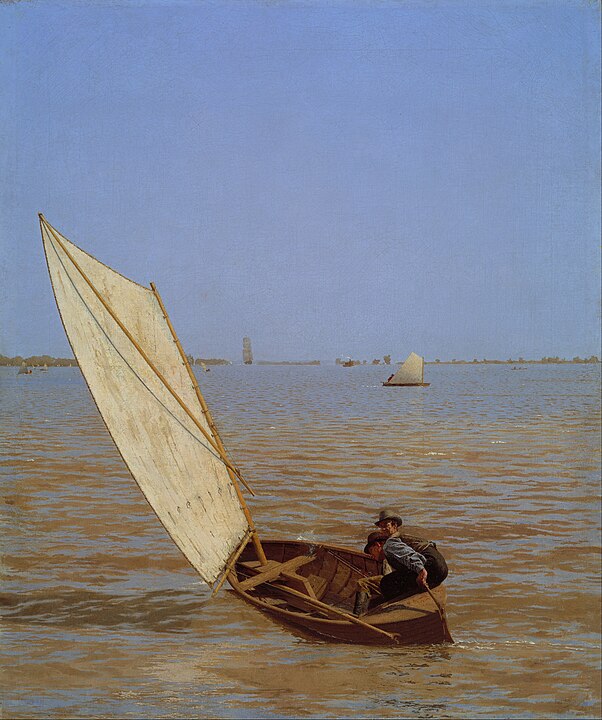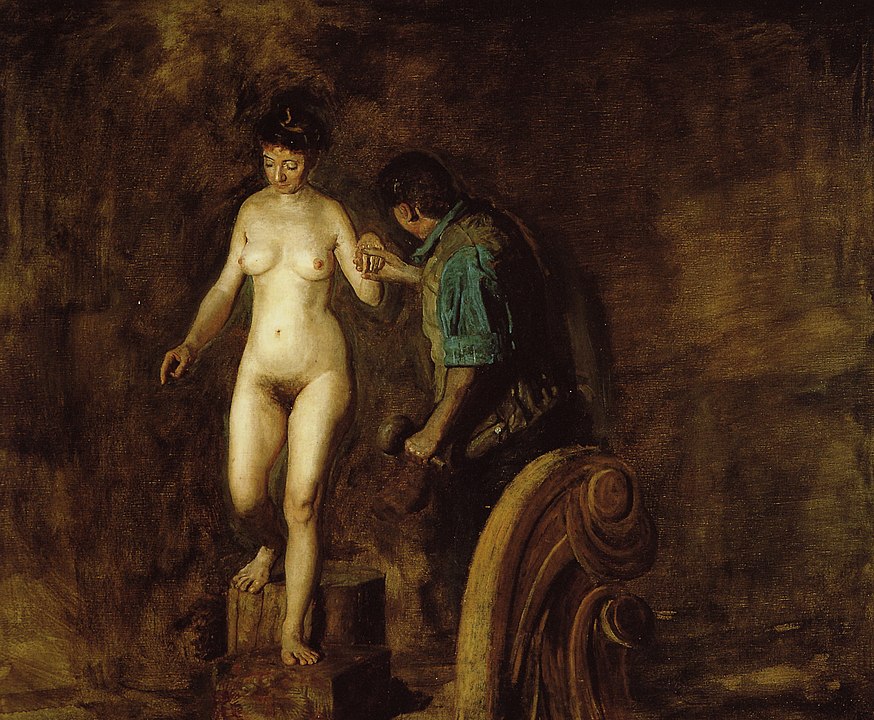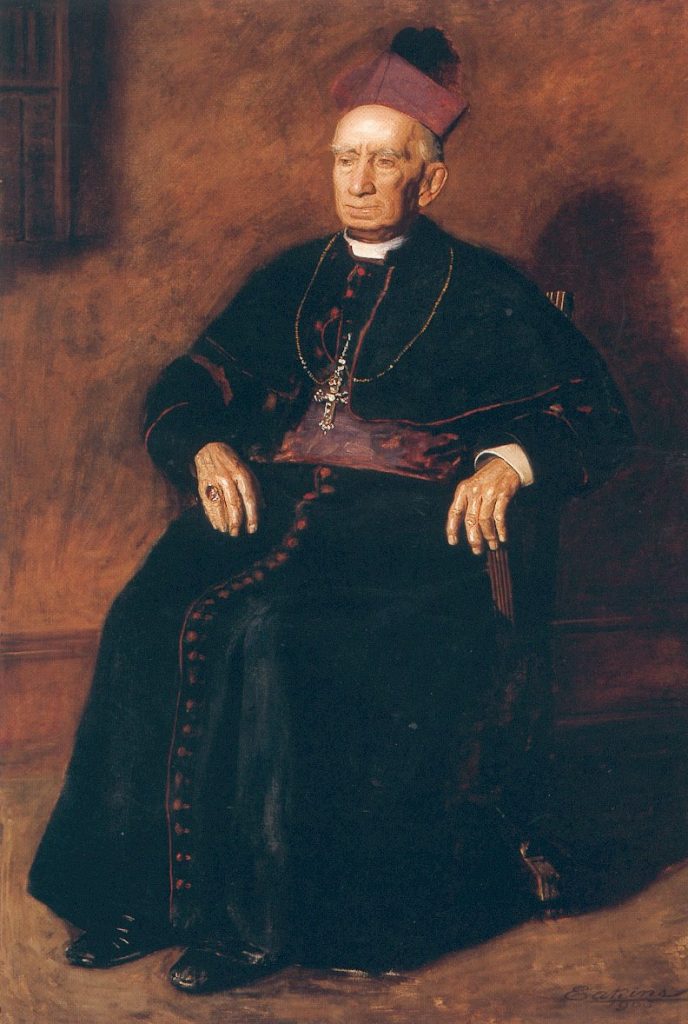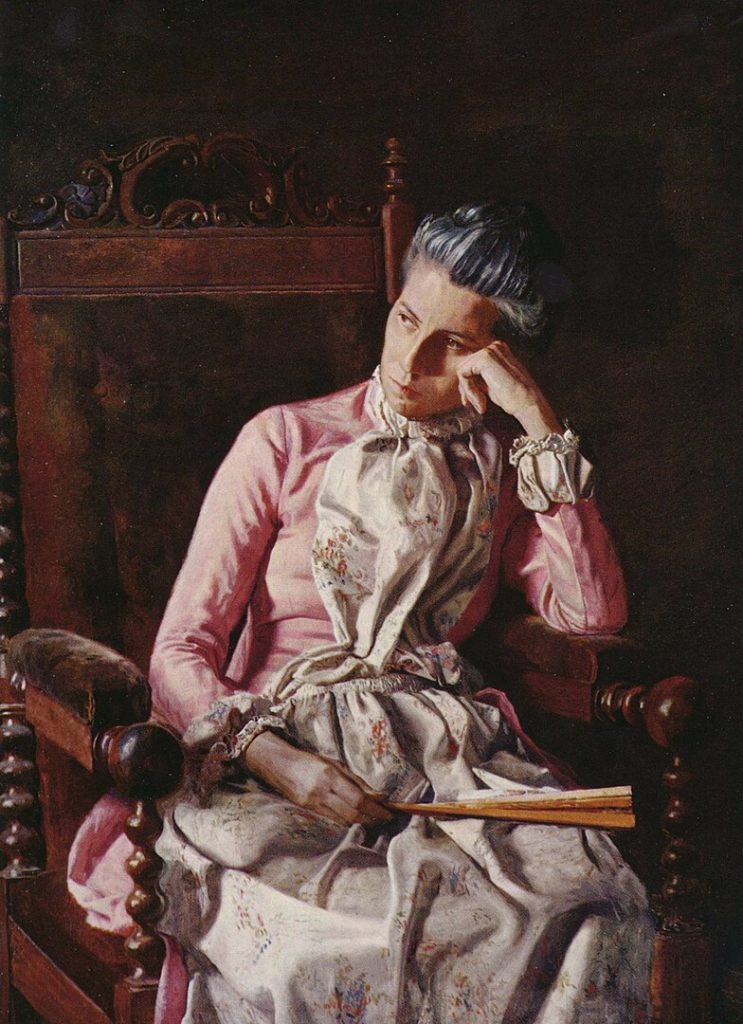
Thomas Eakins (1844–1916), an American realist painter, sculptor, photographer, and teacher, stands as a central figure in the development of American art in the late 19th and early 20th centuries. Born on July 25, 1844, in Philadelphia, Pennsylvania, Eakins’s contributions to the art world extend across various mediums, leaving an enduring impact on American realism.
Eakins began his artistic education at the Pennsylvania Academy of the Fine Arts, where he later became a student and, eventually, an influential instructor. Under the guidance of esteemed teachers like Christian Schussele and Thomas Anshutz, Eakins developed a strong foundation in academic art, emphasizing precise draftsmanship and a keen understanding of anatomy.

Known for his commitment to realism, Eakins focused on portraying the human figure in its natural state, often challenging societal norms and academic conventions. His early works, including “The Gross Clinic” (1875) and “The Agnew Clinic” (1889), showcased his technical skill and a willingness to engage with subjects that were considered unconventional at the time.
Anatomical interests
Eakins’s interest in anatomy extended beyond the canvas, leading him to utilize photography as a tool for capturing realistic images. His photographic studies of motion, as well as his use of the camera as an aid in painting, demonstrated a forward-thinking approach to artistic practice.
As a teacher, Eakins influenced a generation of American artists at the Pennsylvania Academy. His emphasis on direct observation, scientific accuracy, and a deep understanding of the human form set a standard that went against prevailing academic traditions. Eakins’s teaching methods, although controversial in their time, had a lasting impact on American art education.
Despite his artistic achievements, Eakins faced professional challenges and controversies. His unflinching commitment to realism, coupled with his candid depictions of the human body, led to disputes with patrons and colleagues. However, Eakins’s uncompromising vision contributed to the evolution of American art, influencing subsequent generations of artists who appreciated his dedication to truth in representation.

In the latter part of his career, Eakins turned to portraiture, creating intimate and psychologically nuanced paintings. His portraits, such as “The Thinker: Portrait of Louis N. Kenton” (1900) and “Miss Amelia Van Buren” (1891), revealed his ability to capture the individual character and inner life of his subjects.
Championing the figure
Thomas Eakins’s legacy endures not only through his own artistic output but also through the impact he had on American realism and art education. His contributions to the portrayal of the human figure and his influence as a teacher laid the groundwork for the emergence of modern American art.
Eakins’s death on June 25, 1916, marked the end of a chapter in American art, but his legacy lived on, inspiring subsequent generations of artists who valued his dedication to truth, observation, and the uncompromising pursuit of artistic excellence.

In conclusion, Thomas Eakins’s biography is a testament to his role as a pivotal figure in the development of American art. His dedication to realism, innovative use of photography, and transformative impact as an educator continue to shape the trajectory of American art and influence artists who seek to engage with the unvarnished truths of the human experience.






